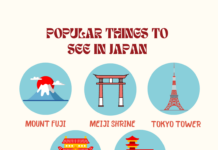The Harbin International Ice and Snow Sculpture Festival in China is the winter festival to go to for anyone wanting to experience a true winter wonderland. Harbin’s weather is influenced by Siberia’s wintery winds, making it an ideal location for the snow and ice sculptures that appear there in January. The Ice and Snow Festival in Harbin is one of the world’s largest ice carving festivals. This year’s festival begins on January 5th and is set to last for more than a month.
The festival was established in 1985, but the winter tradition of ice and snow based artwork are much older than that. Ice lanterns, originally made by freezing water in a bucket and removing and hollowing out the bucket shaped block of ice so that it could hold a candle, were popularly used through the time of the Qing dynasty, which began in 1644 and ended in 1911. Now the term “ice lantern” has become a broad term referring to ice artwork, including ice and snow sculptures, ice architecture and ice flowers.
Harbin, sometimes called “the Ice City”, attracts hundreds of thousands of visitors each year during the month of the Ice and Snow Festival. The entire city participates in the Ice and Snow Festival and thus the whole city is considered to be the venue for the festival, but some areas are very well known and particularly popular. The Sun Island Scenic Area contains the Ice Sculpture Garden and the Ice and Snow Art Hall. Harbin’s Ice and Snow World, established by the Harbin Municipal Government is the largest ice and snow exhibit anywhere in the world. Ice and Snow World offers various types of recreation along with its frosty artwork – Ice and snow world contains an ice hotel, an ice bar, and an ice maze, and visitors can skate, ski, sled, or participate in snowball fights. Then there is Zhaolin Park, home to what used to be known as the Ice Lantern Garden Party and what is now simply called the Lantern Show. The Lantern Show is held at night, and uses light and sound in combination with ice artwork in order to provide a spectacular winter show.
Also held in Zhaolin Park is the Harbin Ice Sculpture competition. Participants create elaborate and often large sculptures. frosty restaurants, icy dragons, frozen Buddhas, and much more can be found in Zhaolin Park. Other popular tourist attractions in the area include the Songhua River Tourist Area, Siberian Tiger Park, Stalin Park, the Bliss Temple, St. Sofia Church, The Mosque, China’s Snow Town, the Erlongshan Ski Resort and theYabuli Ski Resort. All of these attractions can keep a visitor busy and entertained, especially during the festival when the ice sculptures are everywhere. Though the official festival begins on January 5th and runs a little over a month, most of the attractions are there both before and after the festival. If you’re going to be in this part of China this winter, be sure to visit Harbin, the Ice City.








